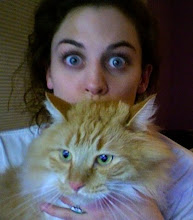On the day that Julian Bleecker visited we also received our final task and team.
Requirements:

Project-Each team is required to design, build, program and test a 'heliotropic smartsurface' that makes use of:
- Solar Energy Harvesting
- Microcontroller programming (Arduino) and circuit building
- Parametric modeling (Digital Project)
- Digital Fabrication
Brainstorm Session #1
- What are we trying to do?
- What does it look like?
Smartsurfaces can....
- Do the job for you
- Create smoother interface
- Create dialogue
- Create characters/fictitious life
- Create/allow for understanding/education
- Expand
- Contract
- Distort
- Move
- React
- Light up
- Create shelter
- Sense (the environment and factors of it)
- And many more....
So far we've seen surfaces that...
- track the sun
- reflect the sun
- concentrate the sun
- shade the sun
- inflate
- have and aperture (open and close)
- expand
- have layers
- direct the sun
From here we began working on a heliotropic clean water system. It involved an ant farm like structure that exposed a purifying system of layered aggregates. The goal was to provide clean water, either to the public or creating a closed system within a building. Additionally, the transparency of the system would serve as an educational element.
We were quickly deferred from this idea. It became obvious that most groups were suffering because they were not operating within the constraints. The objective is to make a heliotropic smartsurface... not to solve the worlds clean water crisis. Therefore, we went back to the drawing board.
Team Brainstorming Session #3:
From here we moved forward with the working concept of an algae powered "heliobot". Essentially we would be creating a robot containing algae. Through photosynthesis a particular strain of algae, C. reinhardtii, produces hydrogen that would be captured in a fuel cell and used to power the robots movement. More on this strain of algae can be found here.
Getting Down to work....
We seemed to have a hard time getting together over these past two weeks. When talking about group work in class, the professors informed us of the reason we are in teams of 6. Apparently studies have shown that teams of 5 to 6 work better than smaller teams. In groups of 5 to 6 there is more room for subgroups and fresh ideas. This has proven to be true. After having three meetings with 4 or less members present we had not gotten very far.
Finally, with a 5th member present we were able to move forward.

Here Aidan is hard at work on our sketch model robot. We used parts from some sort of erector set and a SmartWater bottle for assembly. The robots front legs, controlled by motors, pull the robot forward, dragging its' wheeled rear-side behind.





No comments:
Post a Comment